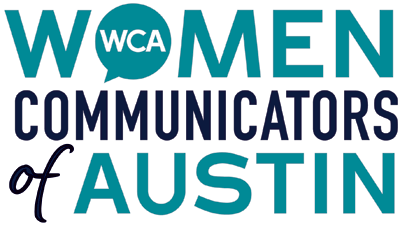
Traci Synatschk of MentoringU
As virtual connections are increasingly the norm, effective websites have shifted from a freelancer’s “nice to have” to a necessity. Traci Synatschk, the speaker at Freelance Austin’s September meeting – Does your website reflect your brand? – explained, “You have to ask yourself: is my website really saying what I want to say and does it match who I am?”
What reaction does your brand provoke?
As a first step in building or revamping a website, Traci recommends always considering what your clients need. “Having consumer psychology in mind and the user experience in place is important,” she says.
A website should incite a potential client to action. Once someone is on your site, the goal is to do one or more of the following:
- Motivate
- Convert
- Engage
Having a strong visual experience – through layout, color, and font – is essential for the user because, as Traci explains, “People make visual judgments way faster than they read copy.”
Colors convey feelings
One way to do that is through color choices. “A lot of research has been done about the use of color to promote brands and businesses in certain directions,” she explains. Traci shared a color wheel – a tool that lists colors and the corresponding feelings and actions they evoke.
For example, red conveys action, energy and excitement; blue promotes trust and authority; green connotes growth and reassurance; purple is individuality and creativity; and orange is optimistic and fun.
In some cases, people use color combinations, a main color(s) and accent color(s). The point is, “You want to match your customers to your brand colors,” Traci says.
She shared some iconic examples of brands and their signature colors to demonstrate her point:
- Dell and American Express use blue to convey trust and dependability;
- T Mobile and Welch’s use purple to communicate creativity and imagination;
- Amazon and Nickelodeon use orange to promote friendliness and confidence;
- Whole Foods and Tropicana use green to connote health;
- Coca-Cola and Target use red for excitement and boldness; and
- The New York Times and Apple use grey for calm and balance.
Fonts and images speak, too
In addition to colors, “Fonts say something, too – they have personalities,” Traci says.
It’s really important to know from a psychological consumer standpoint what fonts say because, as Traci explains, while she enjoys creating fonts, what matters most is whether the fonts are marketing and selling her products to the right person.
For example, slab serifs are bolder while sans serif styles are more progressive and informal. She uses a lot of modern fonts because they have clean lines and mesh well with her brand.
Traci also shared some popular font pairings, which have specific meanings for consumers.
Web-friendliness of fonts is another important consideration. She cautioned against script fonts and using anything smaller than 14-point because they can be difficult for people to read online.
Before selecting images, Traci advises creating a brand guide that includes images that align with your brand. Having one helps when you hire “subcontractors or freelancers to know what kind of images to pull or source,” she says. The color wheel should be applied to your images, too.
A brand guide is not just useful for images though – it is also the easiest way to maintain consistent colors, sizing, and fonts across brand platforms. Traci prefers Canva, which allows users to preset their specifications, and when they use a Canva template, all the brand basics appear automatically.
Figuring out layout
Before anyone starts reading your site, they are going to notice the layout.
A common challenge is too much information. As a brand matures, a website can become cluttered because “we become very tied to” our content, Traci says.
Because it’s not easy to capture people’s attention, make sure your brand is reflected in the user experience or you will lose their interest. “There are a lot of great ways to connect your brand to the journey you are walking customers through,” Traci says.
From a customer perspective, “We want to get them from point a to point b in the fewest number of clicks,” she says, so ask yourself: is your site guiding them the way you want them to go? The best approach: think about what you want someone to do when they come to your site, in the fewest steps possible.
All pages should be built like a landing page
Traci recommends that all pages – whether About Me, Services, or others – be built like landing pages.
She explains, “As you incorporate all the elements of your brand into your website pages, always be thinking: Am I motivating, am I converting, am I engaging?”
She recommends that in thinking about individual pages, consider how they would work if they stood on their own.
Traci shared that on her services page, for example, customers have an opportunity to purchase those services, in addition to learning about them. For conversion specifically, consider adding opt-in forms, shop or schedule options, and contact information.
The bottom line: “You will maximize [customers’] visits if all your pages are built like your landing page and are created to motivate, engage and convert,” she says.
For additional information or to contact Traci, visit her website.
- Event Recap: Turn Adversity into Your Superpowers - February 27, 2022
- Event Recap: Everything You Need to Know about Pricing - January 25, 2022
- Event Recap: From Distraction to Intention - November 18, 2021
